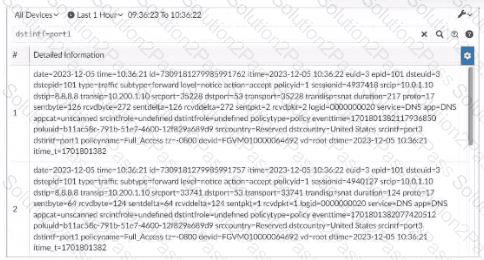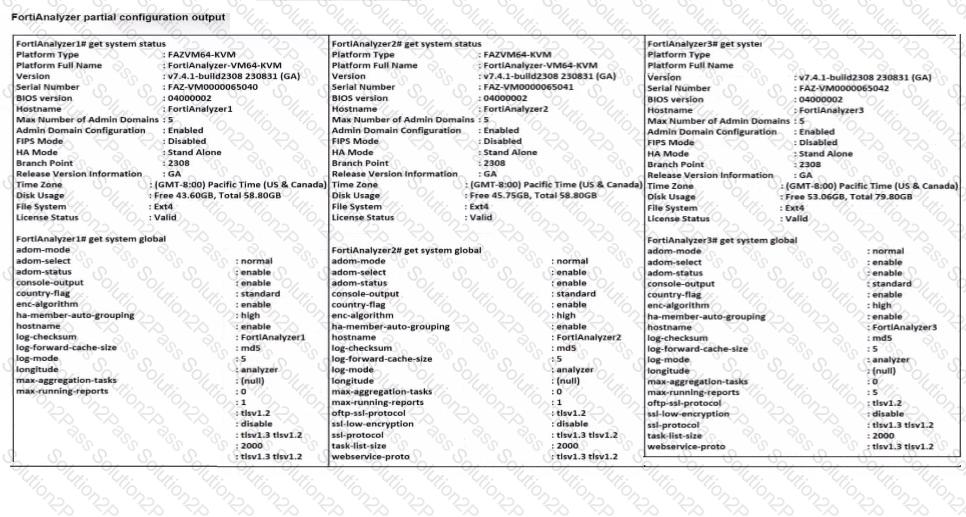FCP_FAZ_AN-7.4 Fortinet FCP - FortiAnalyzer 7.4 Analyst Free Practice Exam Questions (2025 Updated)
Prepare effectively for your Fortinet FCP_FAZ_AN-7.4 FCP - FortiAnalyzer 7.4 Analyst certification with our extensive collection of free, high-quality practice questions. Each question is designed to mirror the actual exam format and objectives, complete with comprehensive answers and detailed explanations. Our materials are regularly updated for 2025, ensuring you have the most current resources to build confidence and succeed on your first attempt.
Which SQL query is in the correct order to query to database in the FortiAnalyzer?
Exhibit.

What can you conclude about the output?
What is the purpose of using data selectors when configuring event handlers?
Which log will generate an event with the status Contained?
Which two methods can you use to send notifications when an event occurs that matches a configured event handler? (Choose two.)
Which statement about sending notifications with incident updates is true?
Which two statement regarding the outbreak detection service are true? (Choose two.)
What happens when the indicator of compromise (IOC) engine on FortiAnalyzer finds web logs that match blacklisted IP addresses?
Exhibit.

What can you conclude about these search results? (Choose two.)
You created a playbook on FortiAnalyzer that uses a FortiOS connector.
When configuring the FortiGate side, which type of trigger must be used so that the actions in an automation stich are available in the FortiOS connector?
Exhibit.

Based on the partial outputs displayed, which devices can be members of a FotiAnalyzer Fabric?
You are trying to configure a task in the playbook editor to run a report.
However, when you try to select the desired playbook, you do to see it listed.
What is the reason?
Which two statements about local logs on FortiAnalyzer are true? (Choose two.)
Which statement about sending notifications with incident update is true?
As part of your analysis, you discover that an incident is a false positive.
You change the incident status to Closed: False Positive.
Which statement about your update is true?
Which statement about the FortiSOAR management extension is correct?
